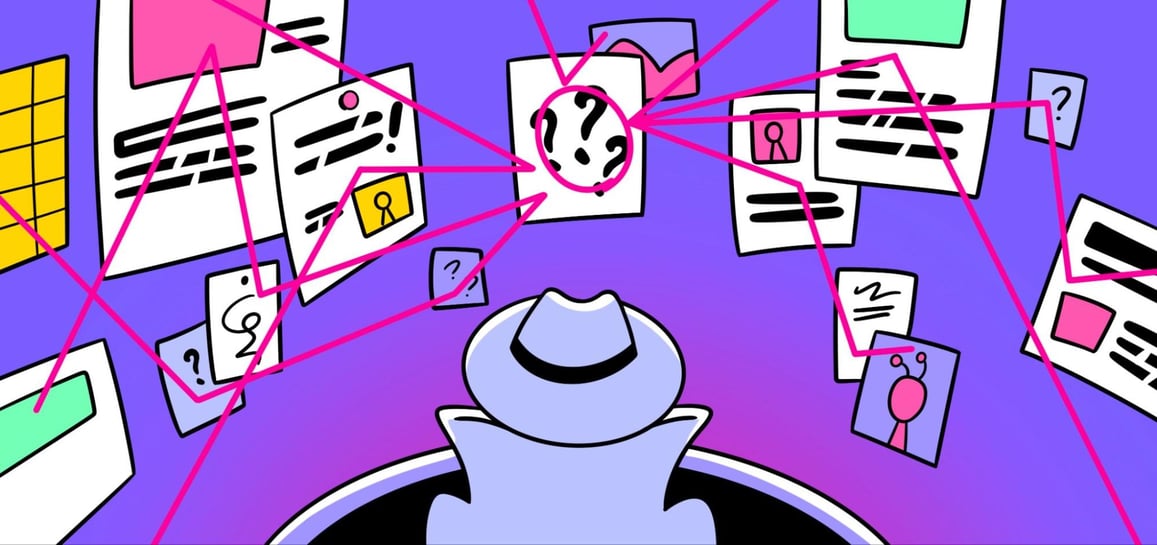A great research finding starts with a hunch. You’re standing at the threshold of innovation, but before you take the plunge, you must sculpt that idea into a testable, market-ready prototype. That’s where the XYZ Hypothesis does its magic, a method to give your intuition the structure it craves.
Making stunning products requires asking good research questions …and having intuition about potential answers. You can waste time pursuing unfruitful ideas to guide your questioning without a good hunch.
We recently found Alberto Savoia’s research methodology to create targeted and efficient hunches: The XYZ hypothesis.

Peeling Back the Layers of the XYZ Hypothesis
Imagine you’re a chef. Your recipe—your hypothesis—is “At least 10% of returning customers exposed to the new voucher feature on our webshop will use it while buying a basic food product with a 20% purchase increase.” This isn’t just a wild guess; it’s a calculated prediction. Here, X% is your engaged customers, Y is your customer base, and Z is the action they’ll take. Let’s break this down and see how each component plays a crucial role in your strategy.
The XYZ hypothesis is an exciting way to test the viability of a product or service. The letters X, Y, and Z represent different dimensions of the experiment.
- X: The share of your target market you can engage or capture.
- Y: The identity of your target market.
- Z: The action your target market will take toward your product/service/idea.
Section 1: Y – Your Target Market Takes the Stage
Your target market (Y) is your audience in this grand play. Who are they? What do they need, and what do they crave? In our recipe, they’re not just any customers but the returning ones, loyal and ripe for re-engagement. To identify your ‘Y’, dig into the data, understand their habits, and speak directly to their desires.
Section 2: X% – Quantifying Engagement
Next, we have the X%, the proportion of your audience you predict will engage. It’s not about being hopeful; it’s about being analytical. The hypothesis boldly claims a 10% engagement rate—enough to be significant, yet realistic enough to be achievable. This is your forecast, your metric of success. It’s what separates a wish from a goal.
Section 3: Z – The Action, The Reaction
Now, the climax: the Z. What will your audience do? In our scenario, it’s using the voucher, a direct, measurable action. This isn’t just any action; it increases their purchase size by 20%. The outcome will tell you if your hypothesis holds water if your strategy is a hit or a miss.
The Science of the XYZ Hypothesis
The XYZ Hypothesis isn’t a static formula; it’s a dynamic, robust framework that evolves as you delve deeper into the core components of your market engagement. At its essence, it’s about breaking down your big vision into testable, measurable, and refutable segments – creating a focused lens, or a “hypo-zoom,” on the most critical aspects of your experiment. This scientific approach extends beyond mere data collection; it requires you to continuously refine your predictions based on real-world feedback, ensuring that each iteration of your product or service is better aligned with market needs and more likely to succeed.
XYZ Hypothesis Example: Instacart Users
Alberto’s example XYZ hypothesis was perfect to put to the test with our audience of Instacart users, as they are online grocery shoppers who often get offered discount coupons.
We conducted a survey to put the hypothesis to the test and find out if Instacart users who receive a coupon are likely to spend more upon checkout.Our first group of Instacart uses were presented with a 10% off coupon when they first entered the survey:

After reacting to the coupon, they were asked to explain their typical shopping experience, including what they purchase and how much they typically spend.
The same feedback survey was run with a group of Instacart users who didn’t see the coupon, so that the results could be compared to determine the impact of the discount offer.
Based on the hard count of items that participants from each group described in their shopping trip, about 92% of Instacart users who saw the coupon would purchase more than 3 items. The percentage of users who bought more than 3 items but did not see the coupon was still up to 85%.
Ground beef, steaks, chicken, fish, garlic, onions, fruits, bread, laundry items, milk, and water.

– Instacart User not shown coupon, Helio participant
There is clearly a percentage difference when shown the coupon versus not, but not as clear as one might hope.
Now, when comparing the predicted expenses of each audience group, we saw that the median spend for non-coupon participants was at $110, while the median for those who saw the coupon rose to $122.

This is a more significant signal, with a 10% increase in spending over the non-coupon Instacart users.
While this number doesn’t equate to the 20% in Alberto’s example hypothesis, it does show how data signals can be collected and compared across unmoderated surveys to help you learn during concept exploration.
From XYZ Hypothesis to Heroic Strategy
Formulating an XYZ Hypothesis is akin to mapping out the DNA of a potential market hit. For example, predicting that “at least 20 percent of packaged sushi-buyers will purchase second-day sushi at half price” isn’t just a guess; it’s a strategic starting point. Such a hypothesis empowers you to make informed decisions, not in darkness, but with a spotlight on your customers’ intricate behaviors and preferences.
However, the missing link in many discussions is how to translate the insights gleaned from this hypothesis into a full-fledged strategy. Let’s bridge that gap. Once you’ve tested and confirmed the viability of your hypothesis, it’s time to embed those insights into every facet of your business strategy. Robert Skrobe has a great breakdown of the steps to set up your XYZ Hypothesis.
How will the hypothesis impact your product development, marketing tactics, pricing models, and customer service excellence?
Don’t write, read, or even think about a business plan for a new idea until you have clear, objective, and robust evidence that there is enough of a business to write about.

—Alberto Savoia, Founder and Innovation Agitator
The Business Model Symphony of XYZ Hypothesis
The XYZ Hypothesis should harmonize with every element of your business model. It’s not a solo performance but a symphony where each section plays in concert—your value proposition, customer relationships, and revenue streams. This synergy ensures your business model not only survives but thrives, pulsating with the rhythm of the market’s demands.
Most discussions on the XYZ Hypothesis stop at the testing phase, not exploring its long-term impact on the business model. Here’s where we can elevate the conversation.
Your XYZ Hypothesis is a continuous customer feedback loop, informing and refining the business model as the market evolves. Doing so will provide a strategic framework to understand the hypothesis and how it can serve as a beacon, guiding your business model through the ever-changing market landscape and ensuring sustained success.
The Proof is in the Pudding: Testing Your Hypothesis
Let’s get moving! It’s time to transition from theory to action and put your hypothesis through the wringer. Implement that intriguing voucher feature you’ve been contemplating, observe its adoption rate, scrutinize the growth in transaction values, and dissect the incoming data.
Remember, proving your hypothesis is not a one-shot endeavor; it’s a recurring cycle of continuous discovery—testing, learning, and enhancing. Each round of testing refines your hypothesis, ensuring it matures in lockstep with your market insights. If you need help setting up a continuous learning process for your product or company, simply reach out to start a conversation with an expert.
Consider the XYZ Hypothesis as a set of guidelines and a transformative thought process. It demands a disciplined, data-driven, and customer-focused mindset to convert your prototype into a market reality. Applying the XYZ Hypothesis gives your initial intuition the substance and precision necessary to carve out a niche in today’s competitive business landscape.
BONUS: If you want to understand the why behind your customer’s choices, add Sebastian Kortmann‘s ABC approach to the equation (view more in this LinkedIn post).




